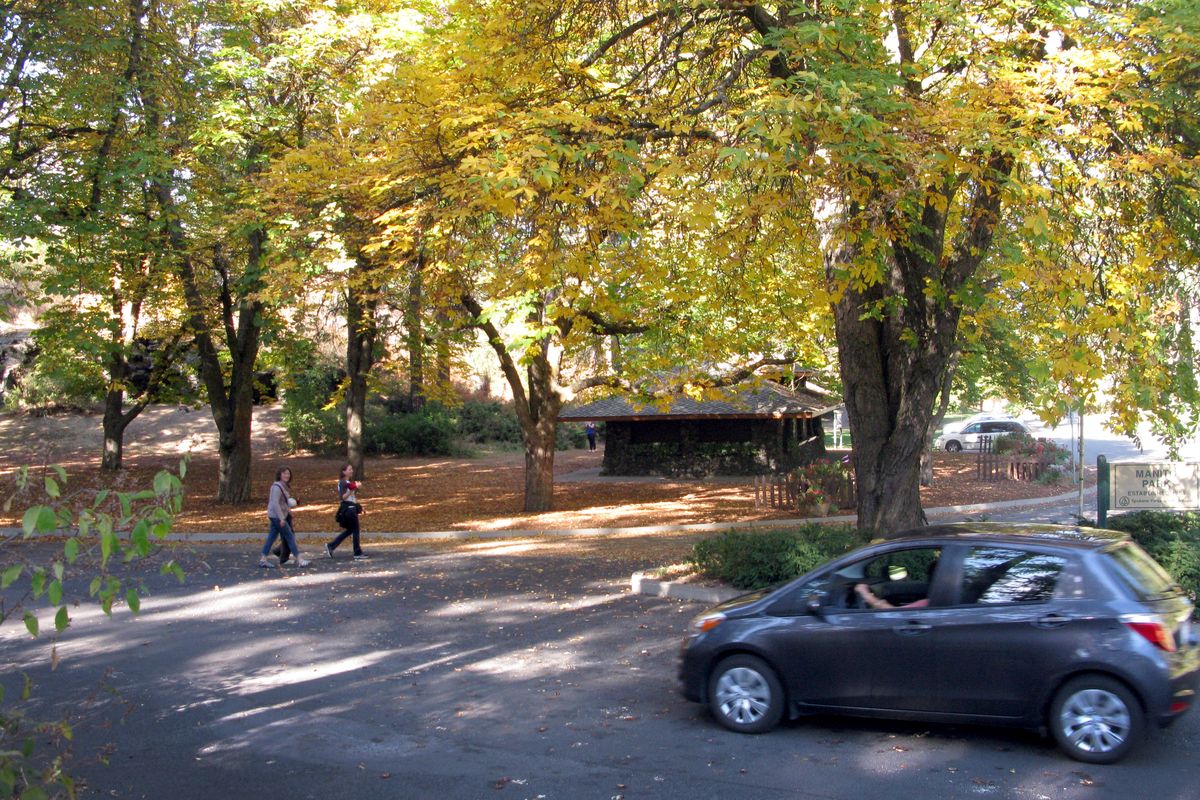Then and Now: The Manito Park zoo
Present day: The same view includes The Park Bench, center, a seasonal snack bar. (Jesse Tinsley)Buy a print of this photo
Charles Balzer, a German immigrant born in 1877, was hired by the city of Spokane in 1902 as a florist and later took over the city’s newest park on the South Hill. The city let him live in Montrose Park in a simple house in the middle of an undeveloped area laid out by Francis Cook, the original developer of the neighborhood in the 1880s.
As homes slowly filled in around it, the area became a popular Sunday picnic spot. Early amenities were a pond and a dance pavilion. Streetcars brought visitors up the hill from downtown. In 1903 the name was changed to Manito, believed to be an Indian word for “spirit of nature.” Balzer laid out walking paths, planted shrubs and built play structures out of salvaged power poles. More ponds were built. He constructed an entry arch with the words “See Spokane Shine.”
In 1905, he began building cages and collecting animals to display. It grew into a zoo featuring dozens of animals, including deer, elk and monkeys and black, grizzly and polar bears.
In 1907, the city formed the Parks Board, headed by Aubrey White, to oversee the park system. The new board hired the Olmsted brothers, noted landscape architects who had designed New York’s Central Park, to review the city’s holdings. Among their recommendations for Manito were to add more playfields, to landscape to highlight the rocky cliffs and to get rid of the makeshift zoo.
White didn’t share the 1908 report because he was afraid it might cause landowners of other proposed parkland to increase their prices. But the board and Balzer were at odds over how things should be done, and he resigned in 1909. John Duncan, an Olmsted aficionado from Boston, became parks superintendent in 1910 and implemented many Olmsted suggestions, though the zoo remained for many years. The formal Duncan Garden bears his name.
In 1923, 9-year-old Elizabeth Harris stuck a handful of bread into the polar bear cage and two bears pounced, severing her arm. Despite the gruesome attack, Elizabeth insisted the bears not be harmed because it was her fault. But there was a growing awareness of the drab, cramped conditions in which the animals lived.
In 1933, the zoo closed as costs became too much for the city. Animals were given away or euthanized, and some were stuffed and put on display. Since then, ponds have been filled in and most of Balzer’s early landscape designs have given way to open space, planned garden areas and roads. Balzer went on to work in real estate and operate his own nursery. He died in 1953.
– Jesse Tinsley
